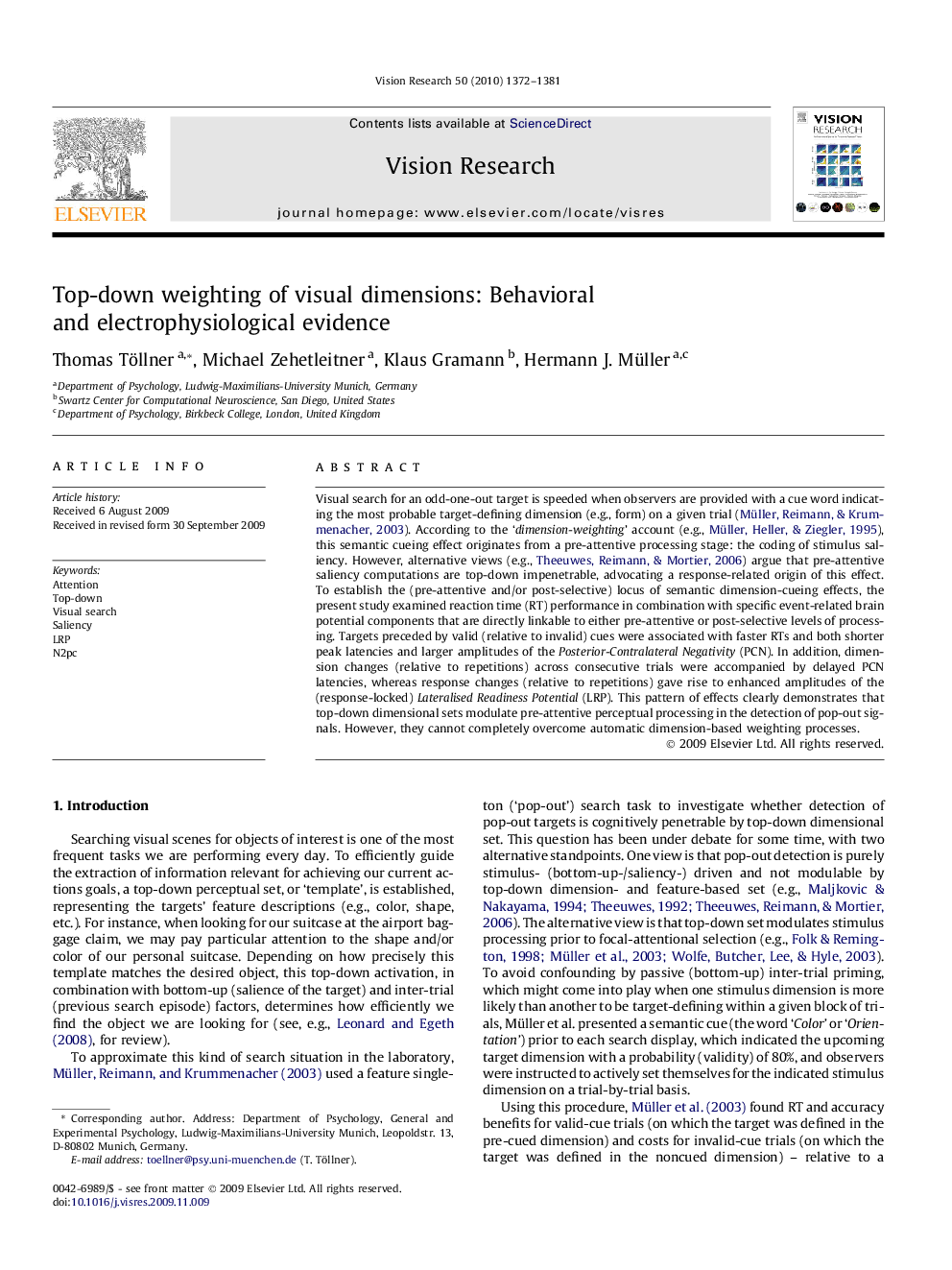| Article ID | Journal | Published Year | Pages | File Type |
|---|---|---|---|---|
| 4034471 | Vision Research | 2010 | 10 Pages |
Visual search for an odd-one-out target is speeded when observers are provided with a cue word indicating the most probable target-defining dimension (e.g., form) on a given trial (Müller, Reimann, & Krummenacher, 2003). According to the ‘dimension-weighting’ account (e.g., Müller, Heller, & Ziegler, 1995), this semantic cueing effect originates from a pre-attentive processing stage: the coding of stimulus saliency. However, alternative views (e.g., Theeuwes, Reimann, & Mortier, 2006) argue that pre-attentive saliency computations are top-down impenetrable, advocating a response-related origin of this effect. To establish the (pre-attentive and/or post-selective) locus of semantic dimension-cueing effects, the present study examined reaction time (RT) performance in combination with specific event-related brain potential components that are directly linkable to either pre-attentive or post-selective levels of processing. Targets preceded by valid (relative to invalid) cues were associated with faster RTs and both shorter peak latencies and larger amplitudes of the Posterior-Contralateral Negativity (PCN). In addition, dimension changes (relative to repetitions) across consecutive trials were accompanied by delayed PCN latencies, whereas response changes (relative to repetitions) gave rise to enhanced amplitudes of the (response-locked) Lateralised Readiness Potential (LRP). This pattern of effects clearly demonstrates that top-down dimensional sets modulate pre-attentive perceptual processing in the detection of pop-out signals. However, they cannot completely overcome automatic dimension-based weighting processes.
